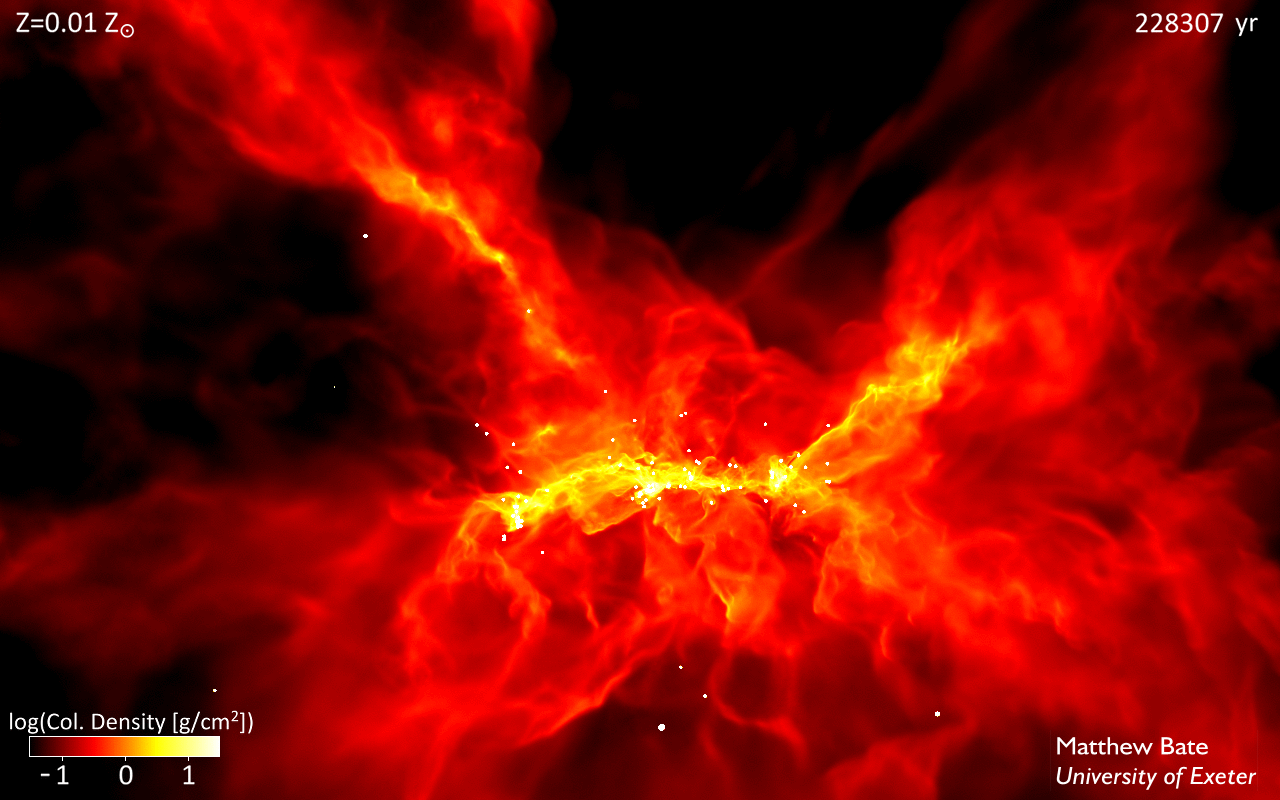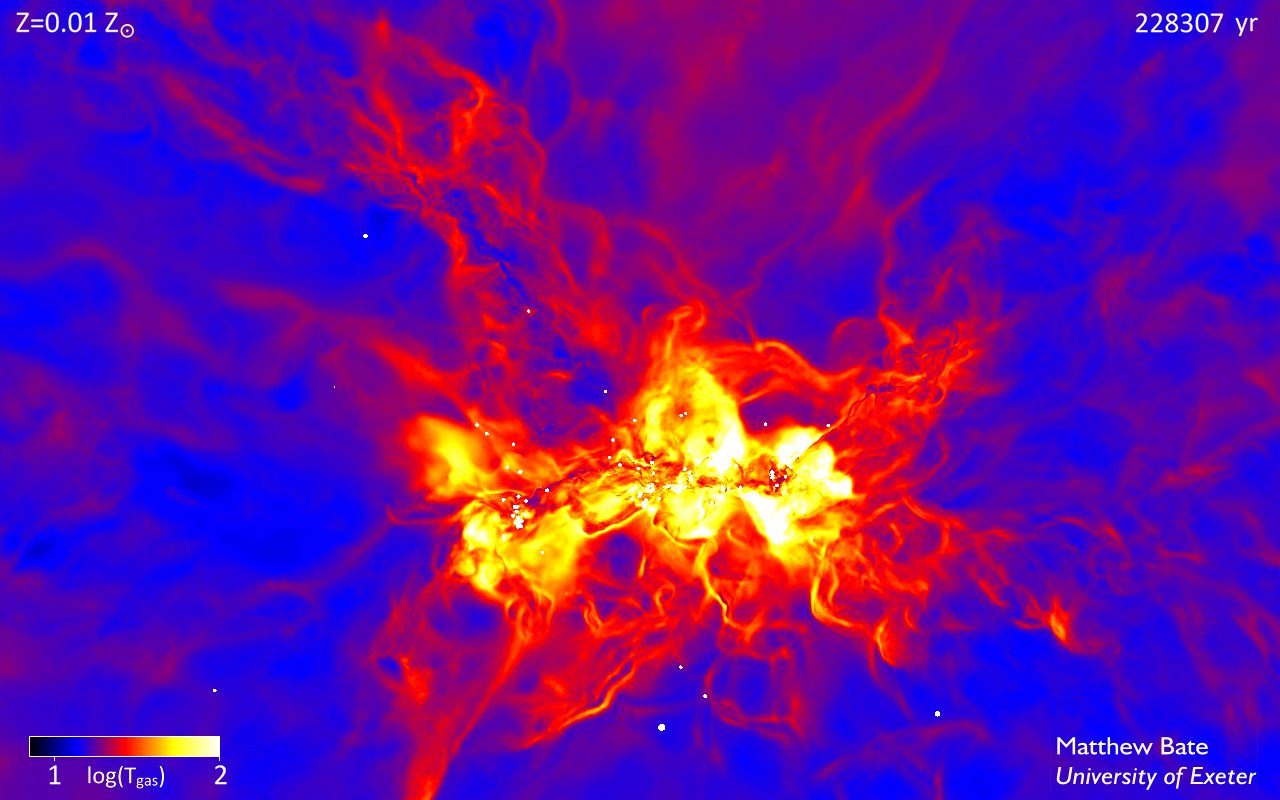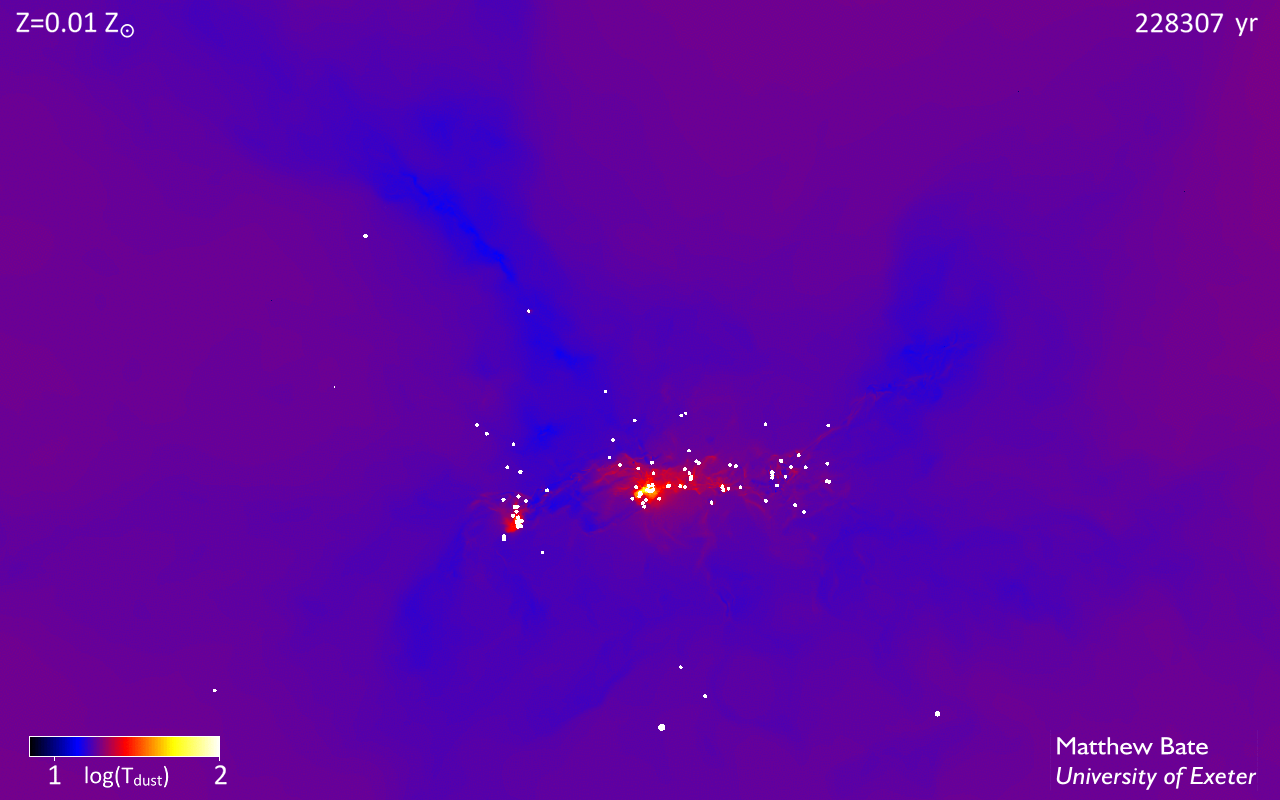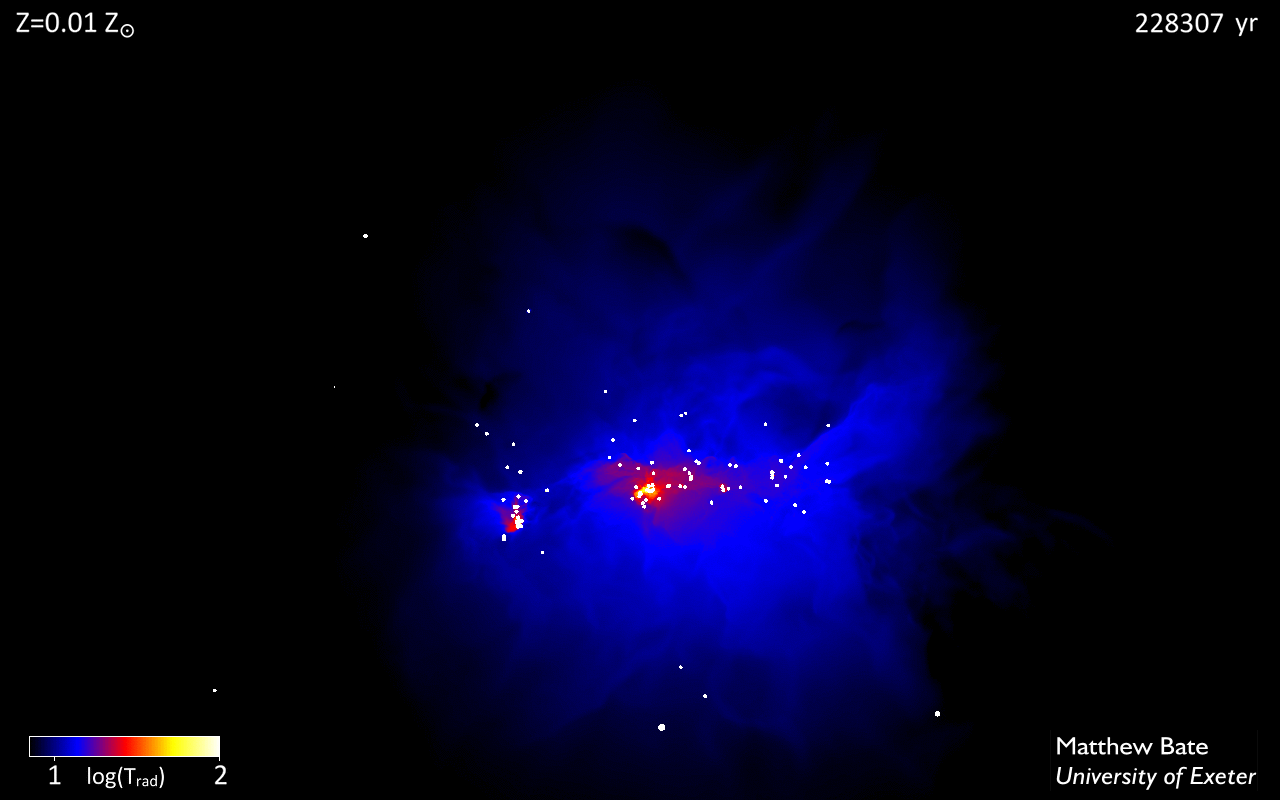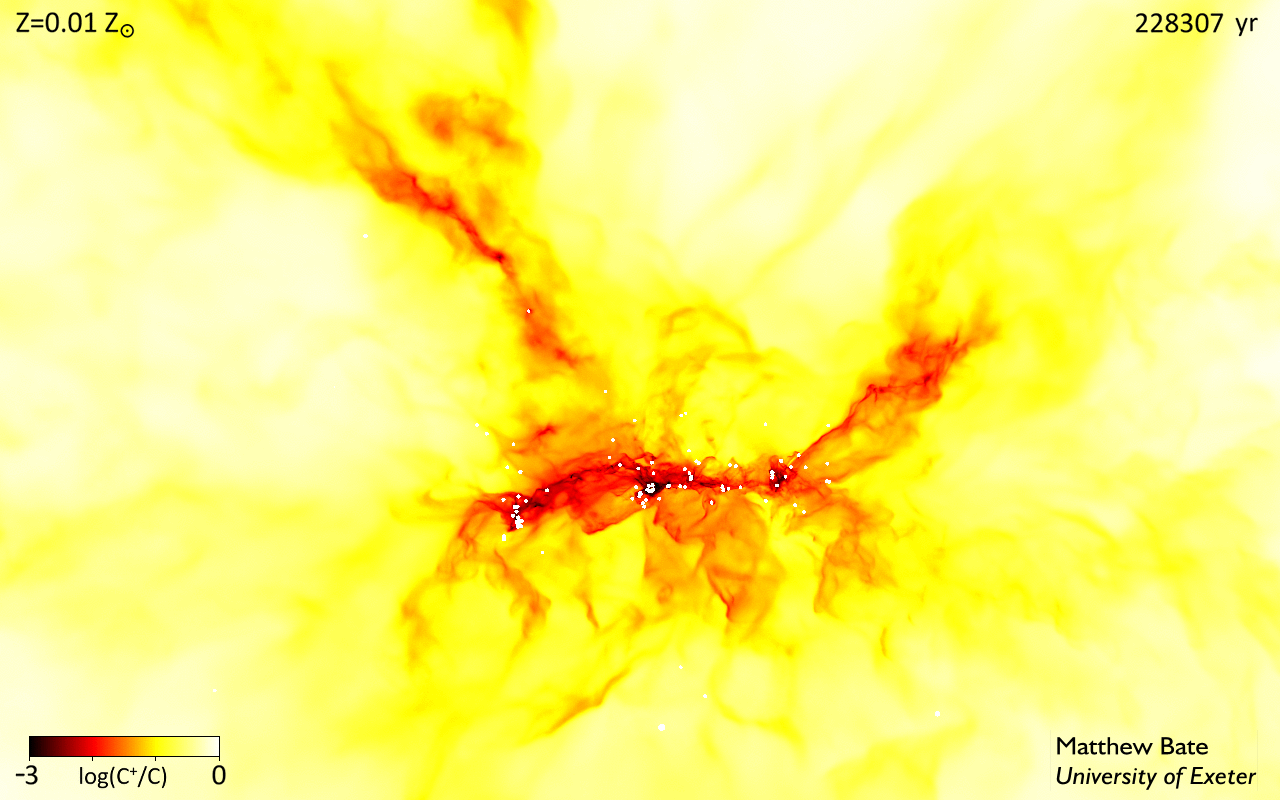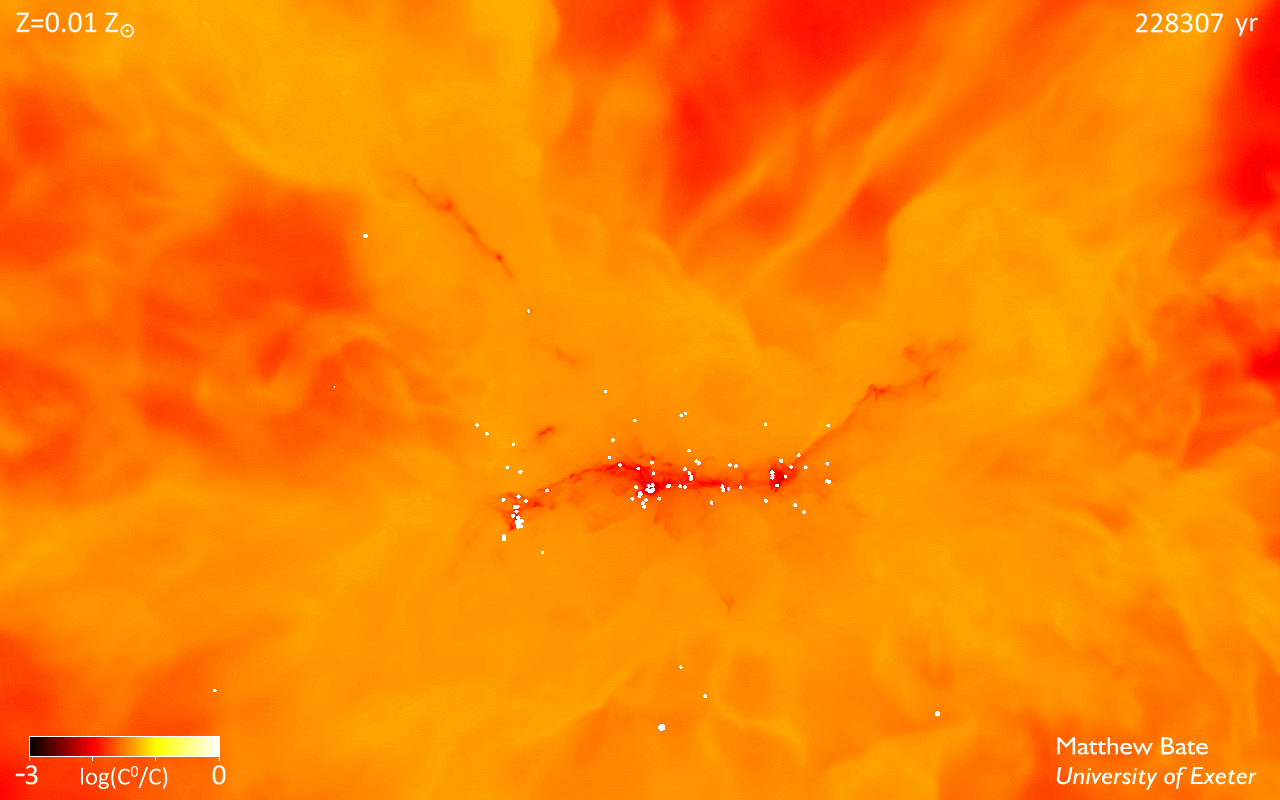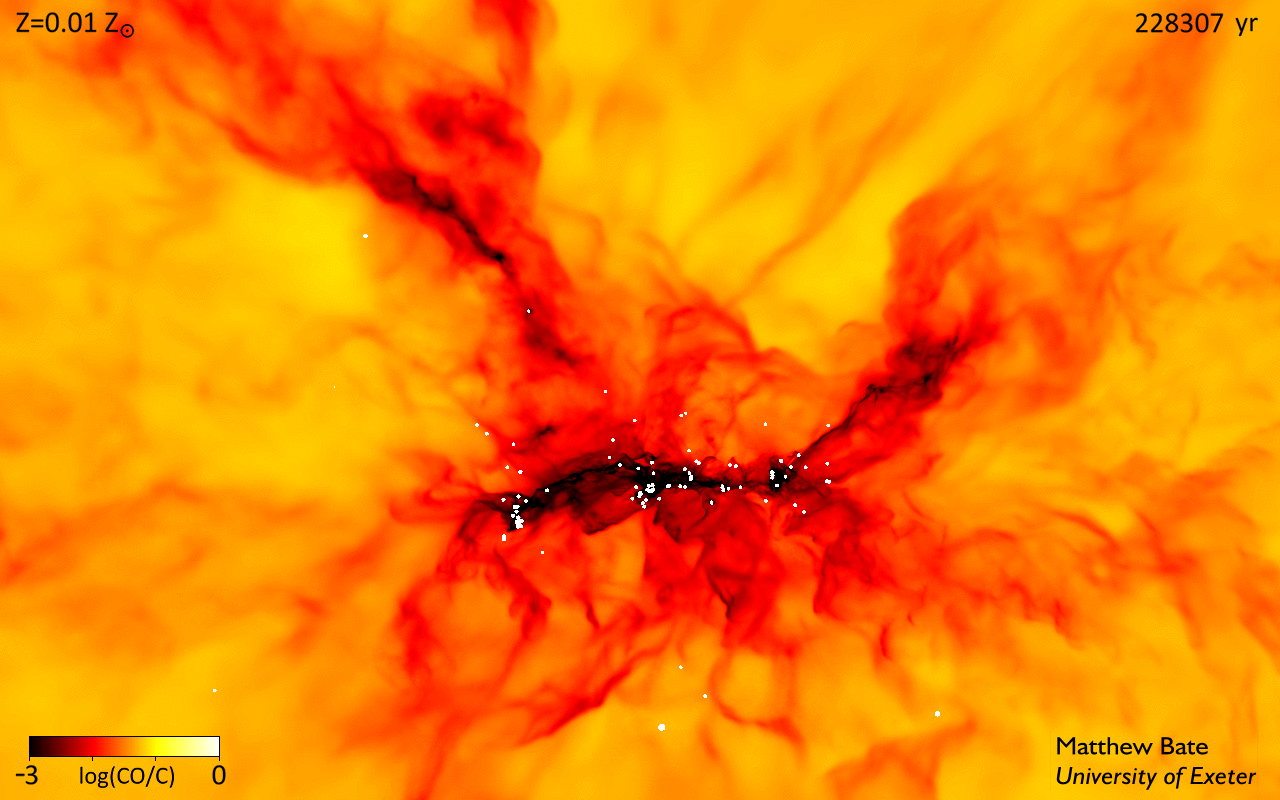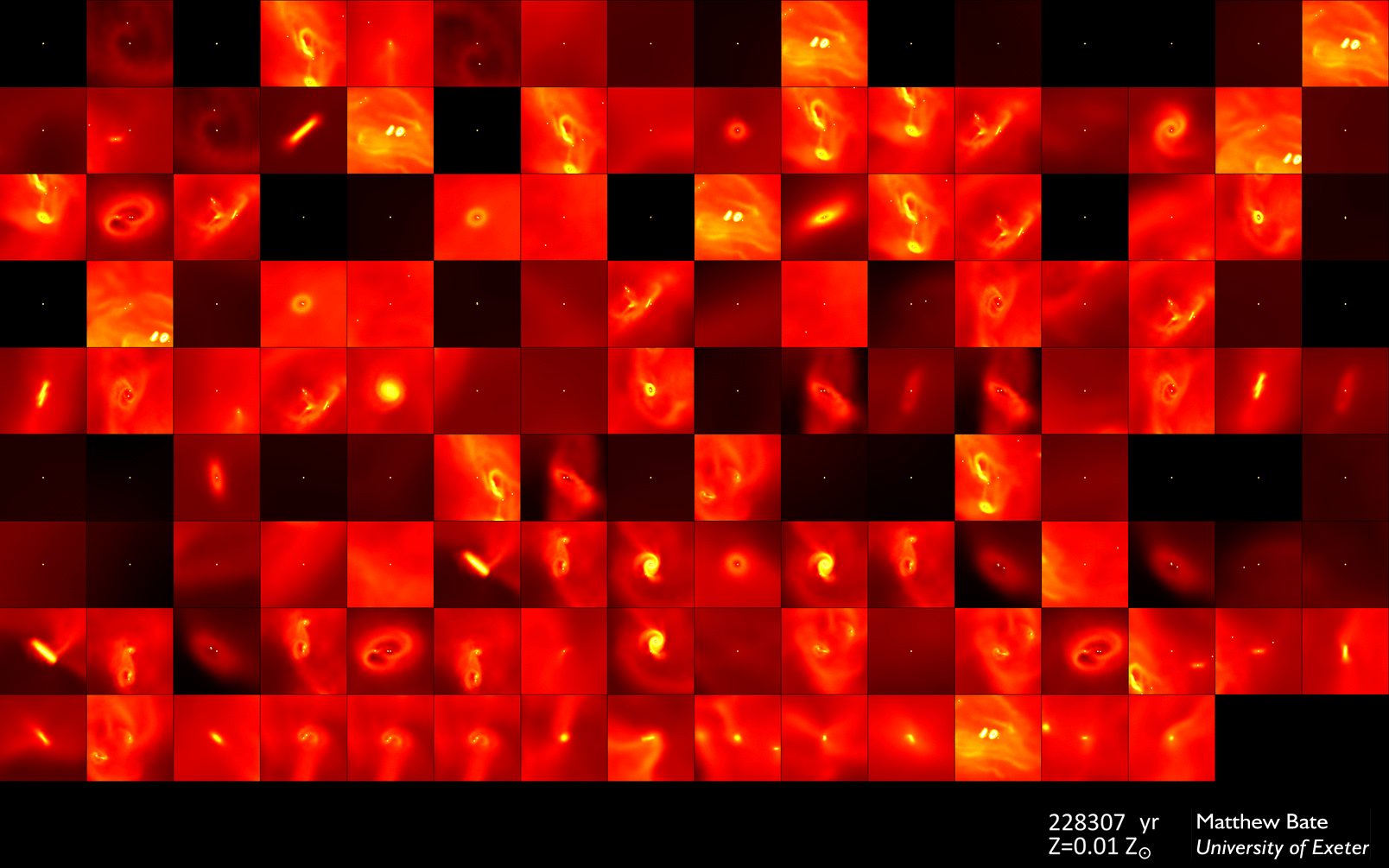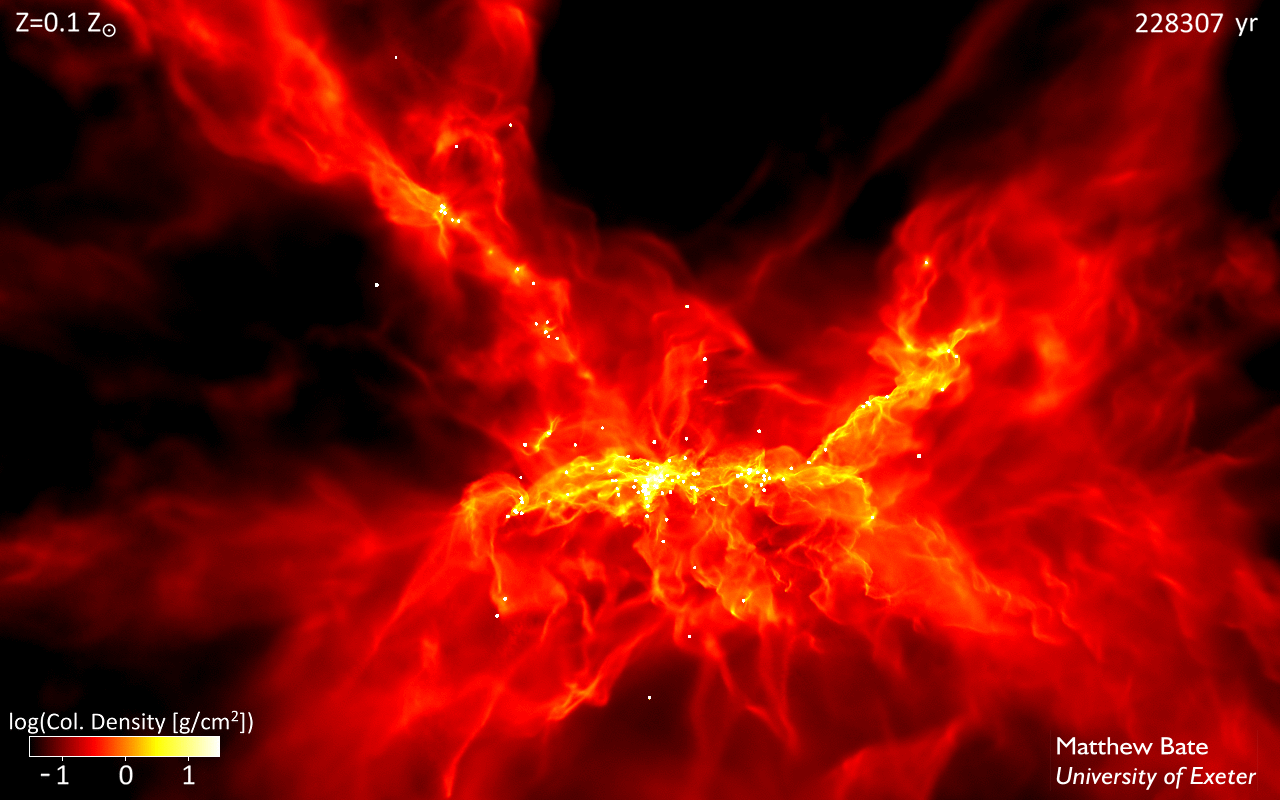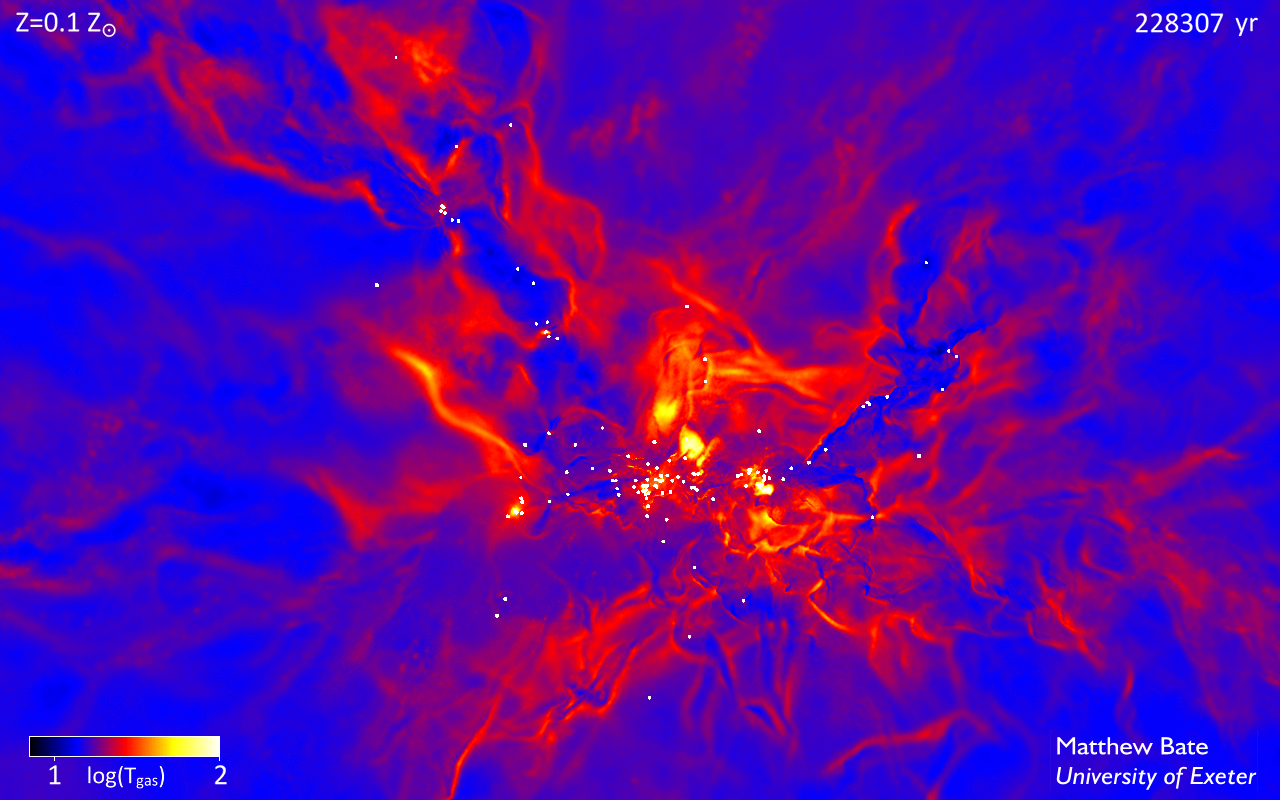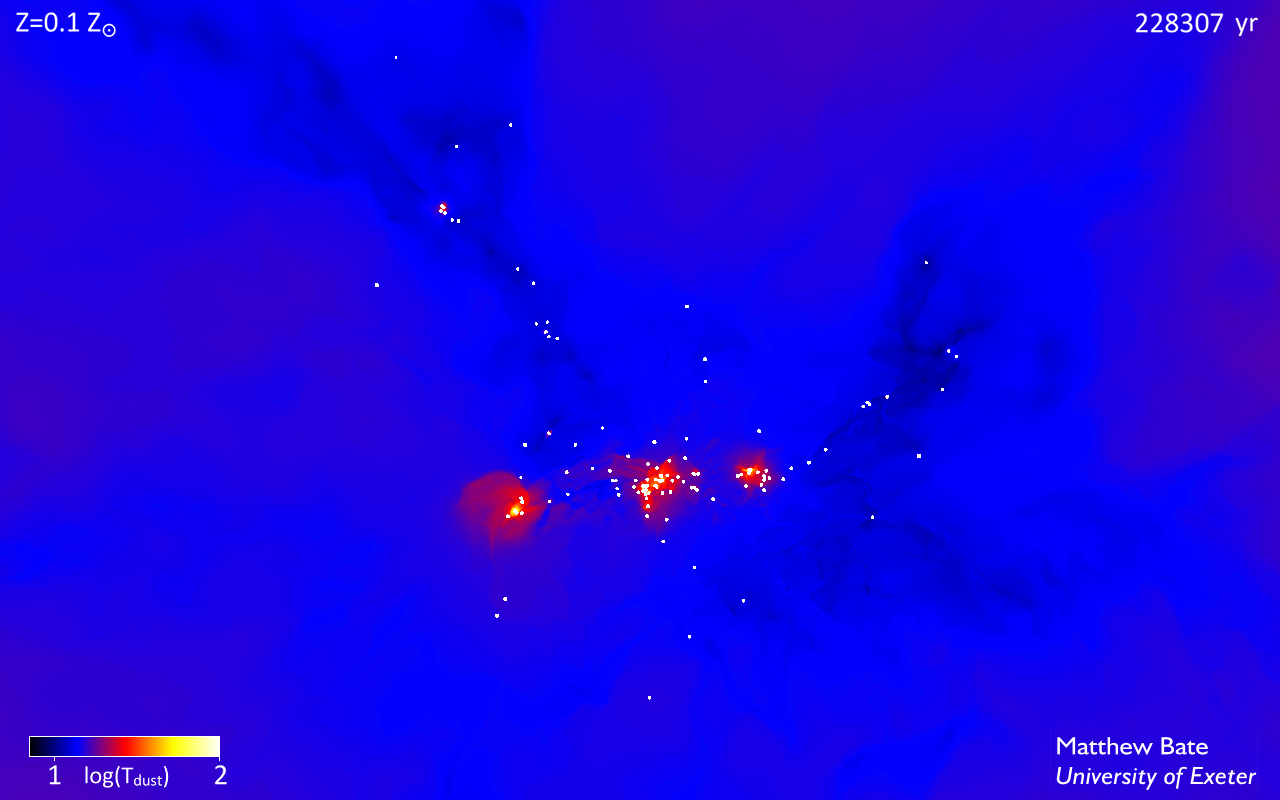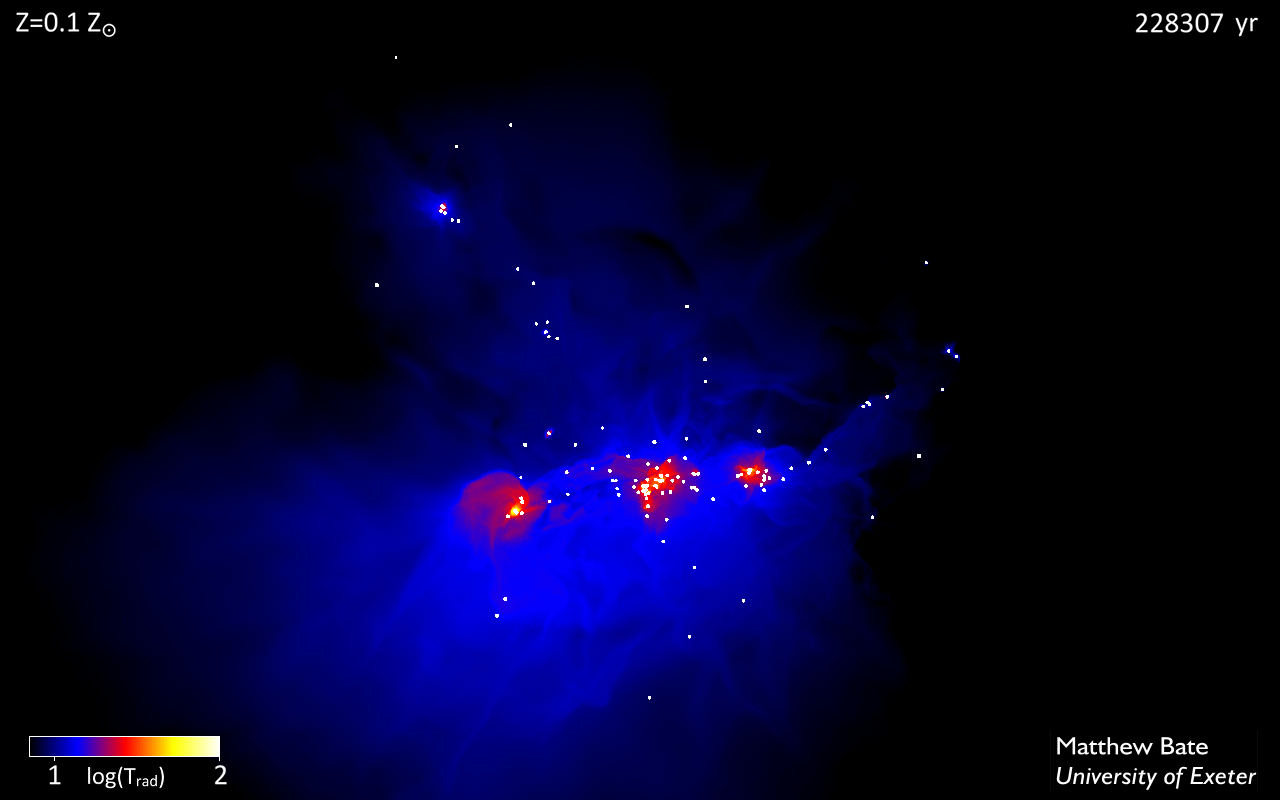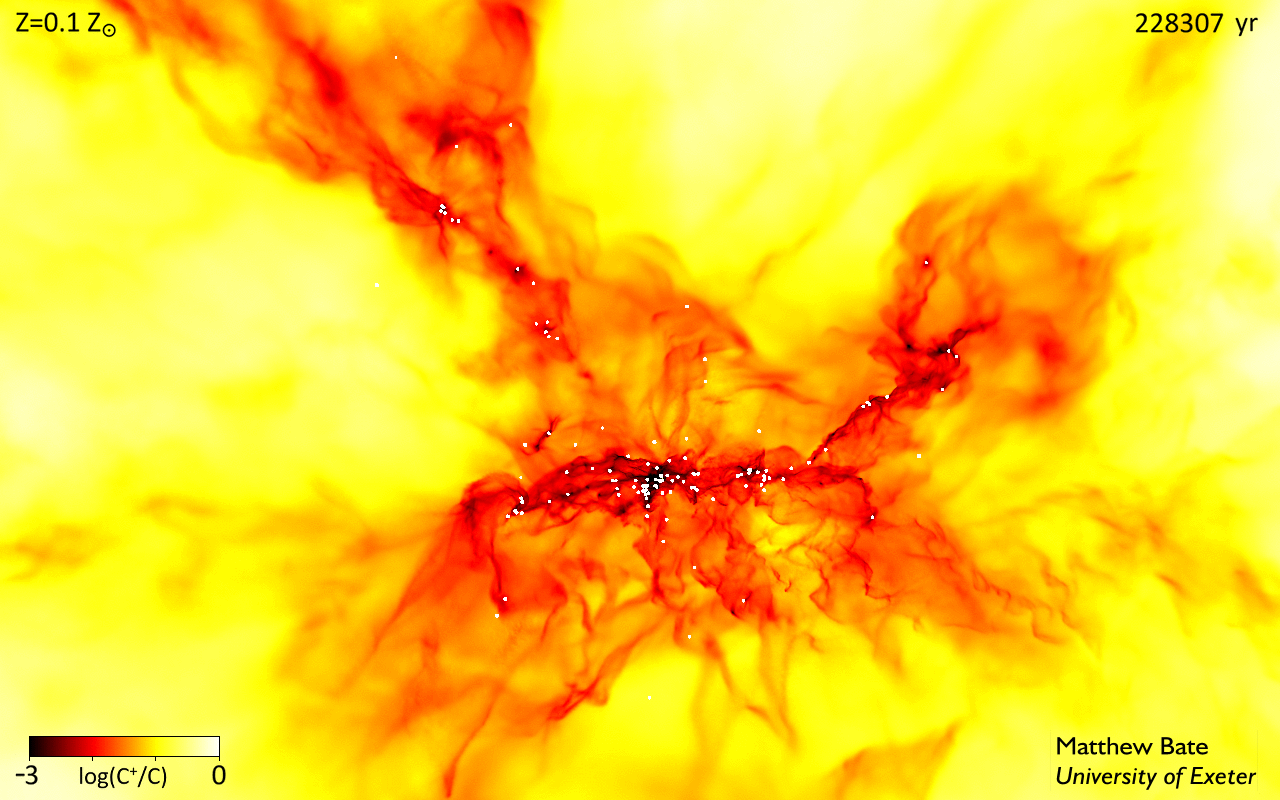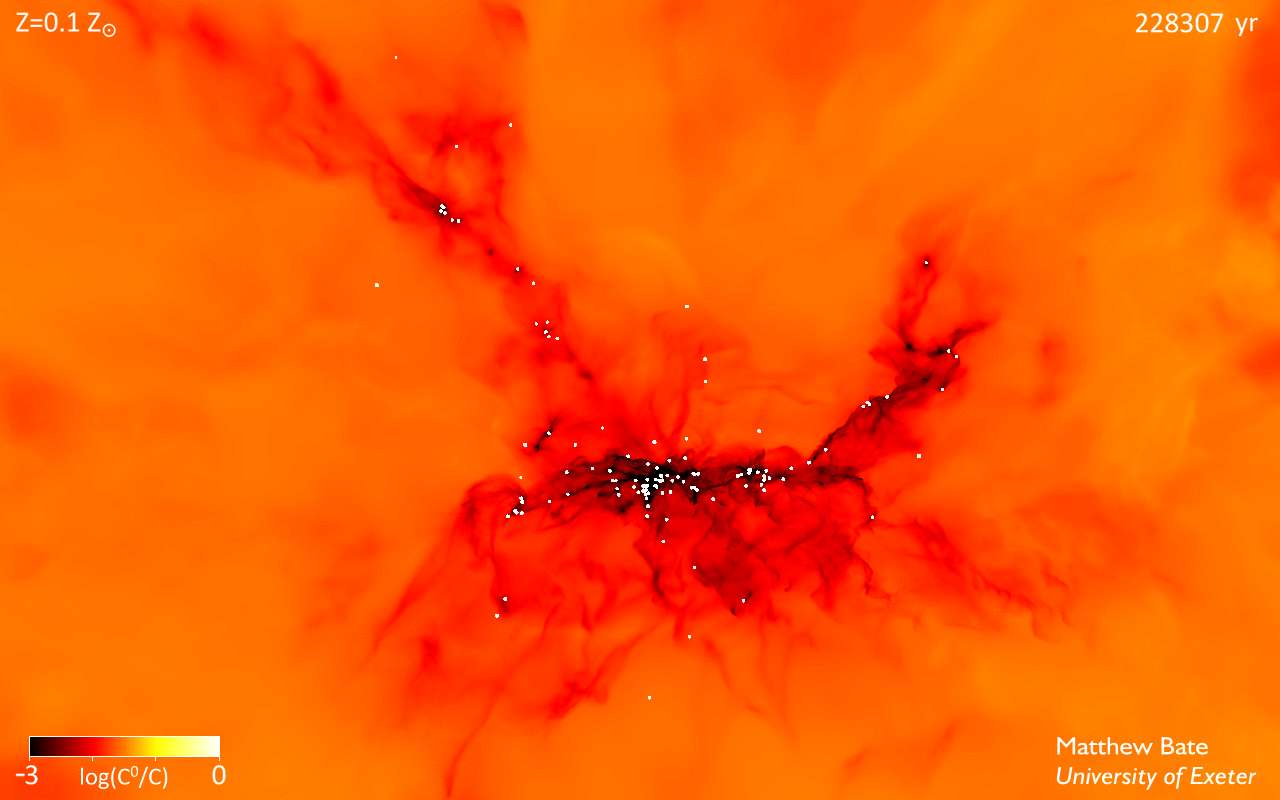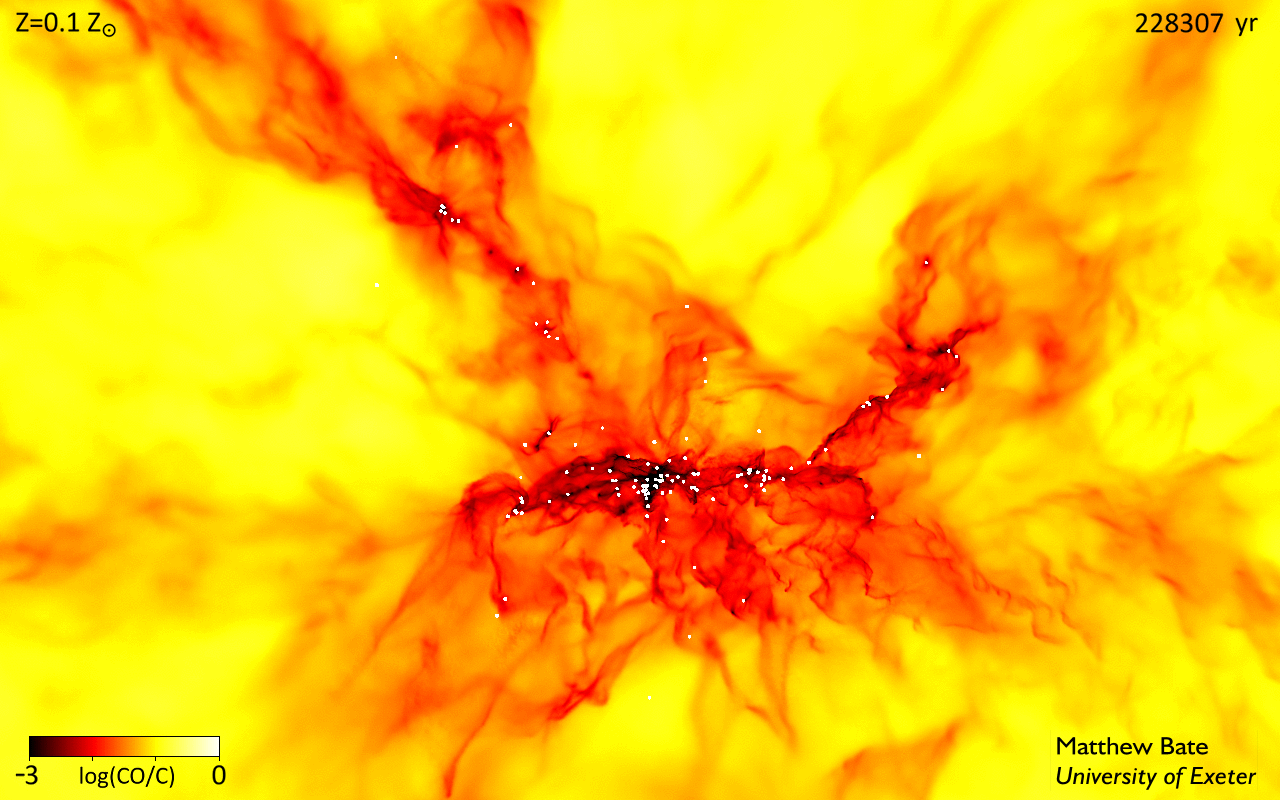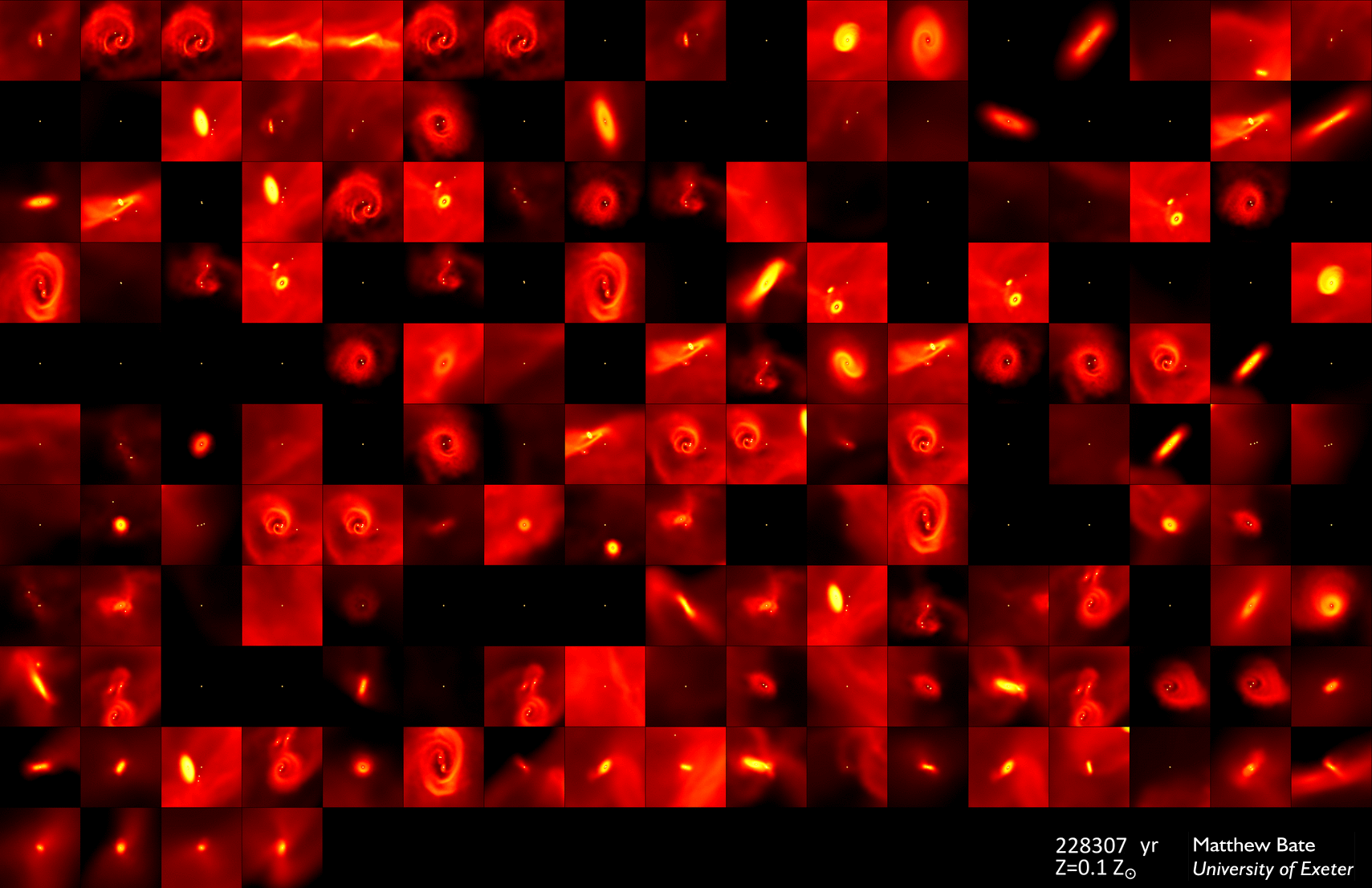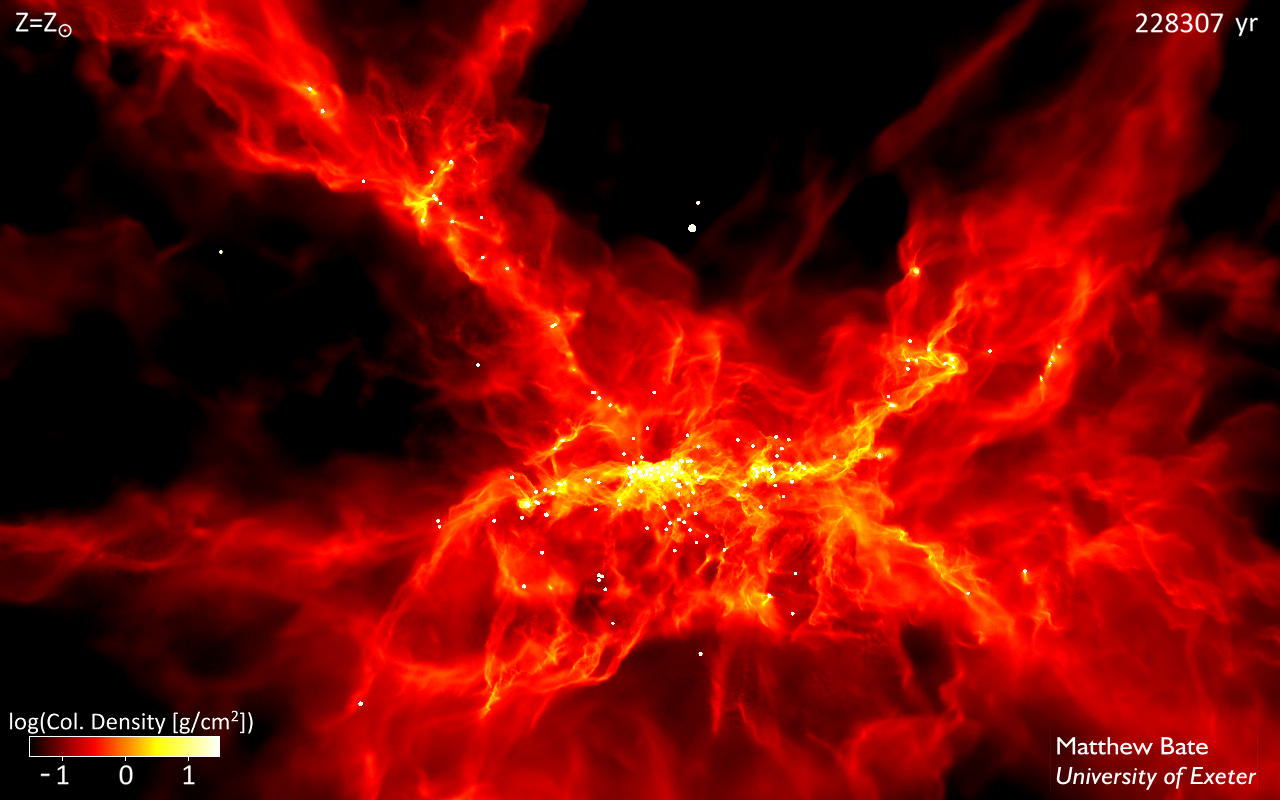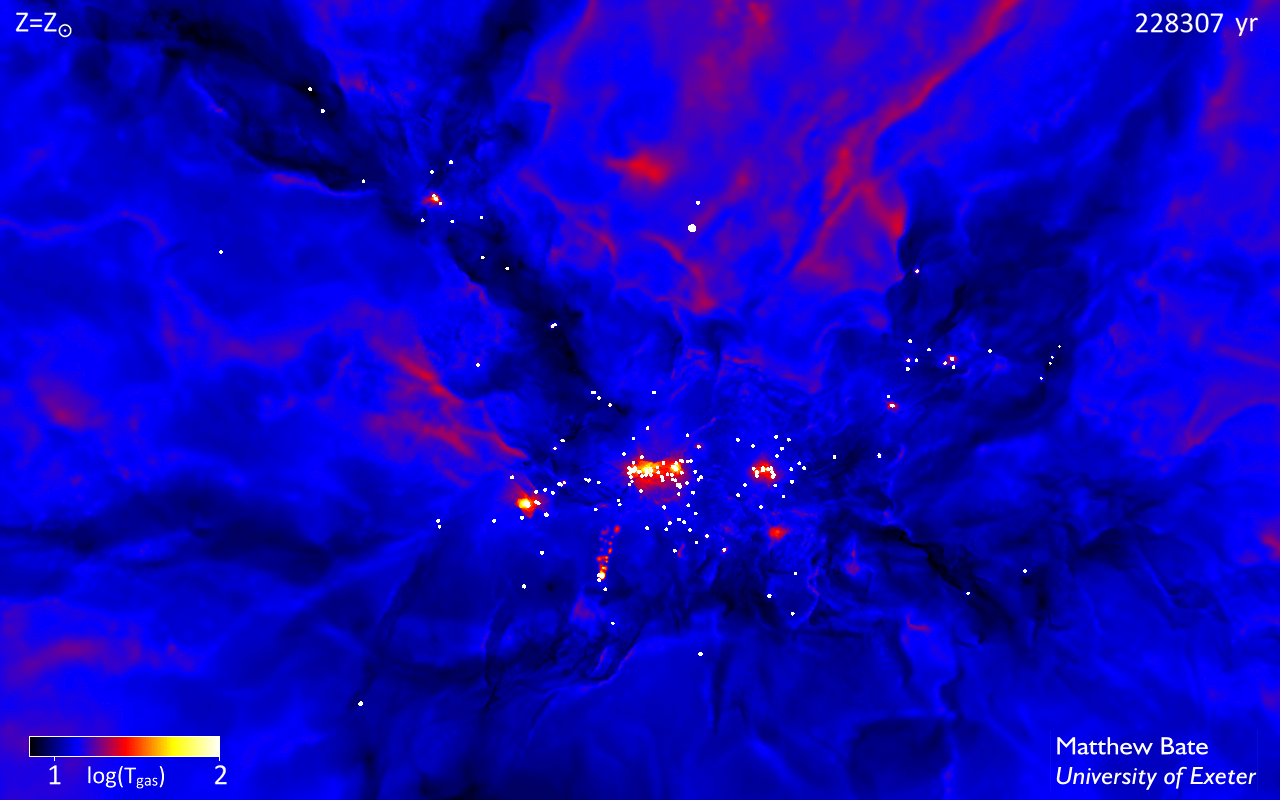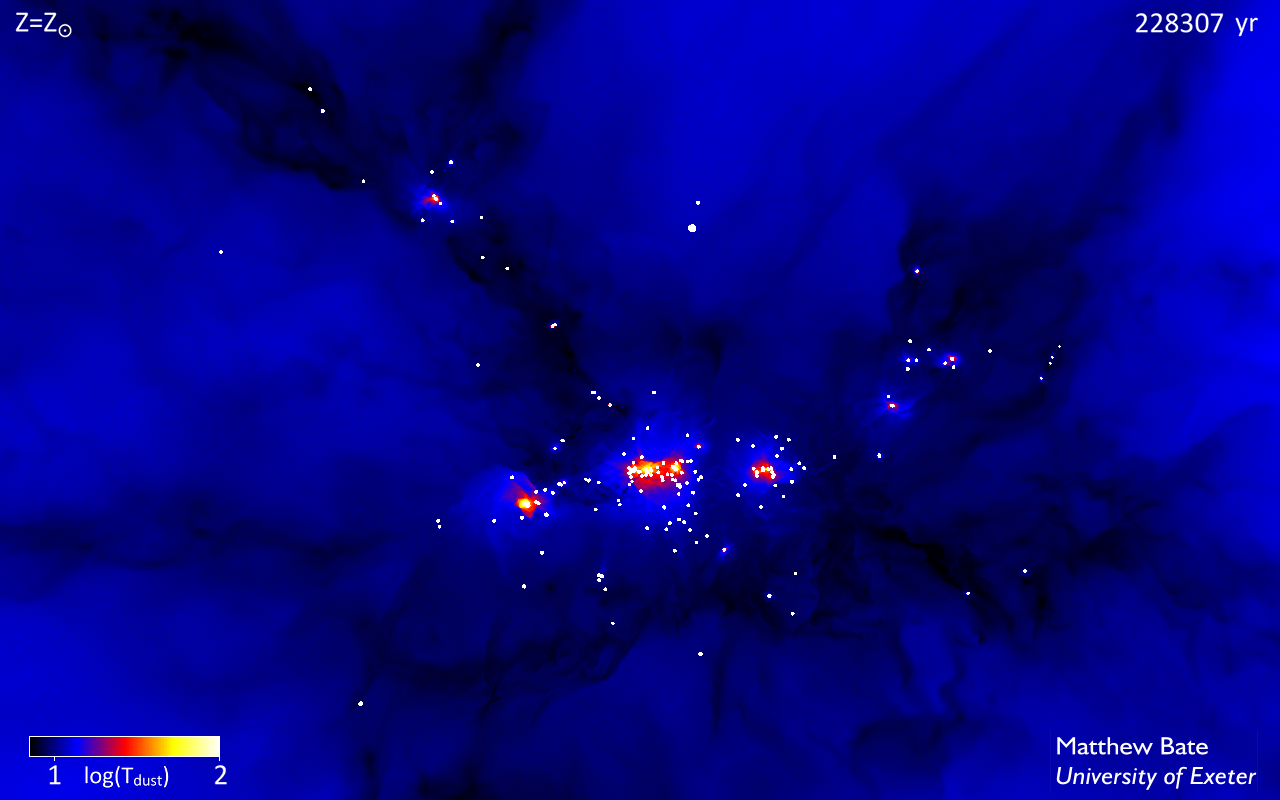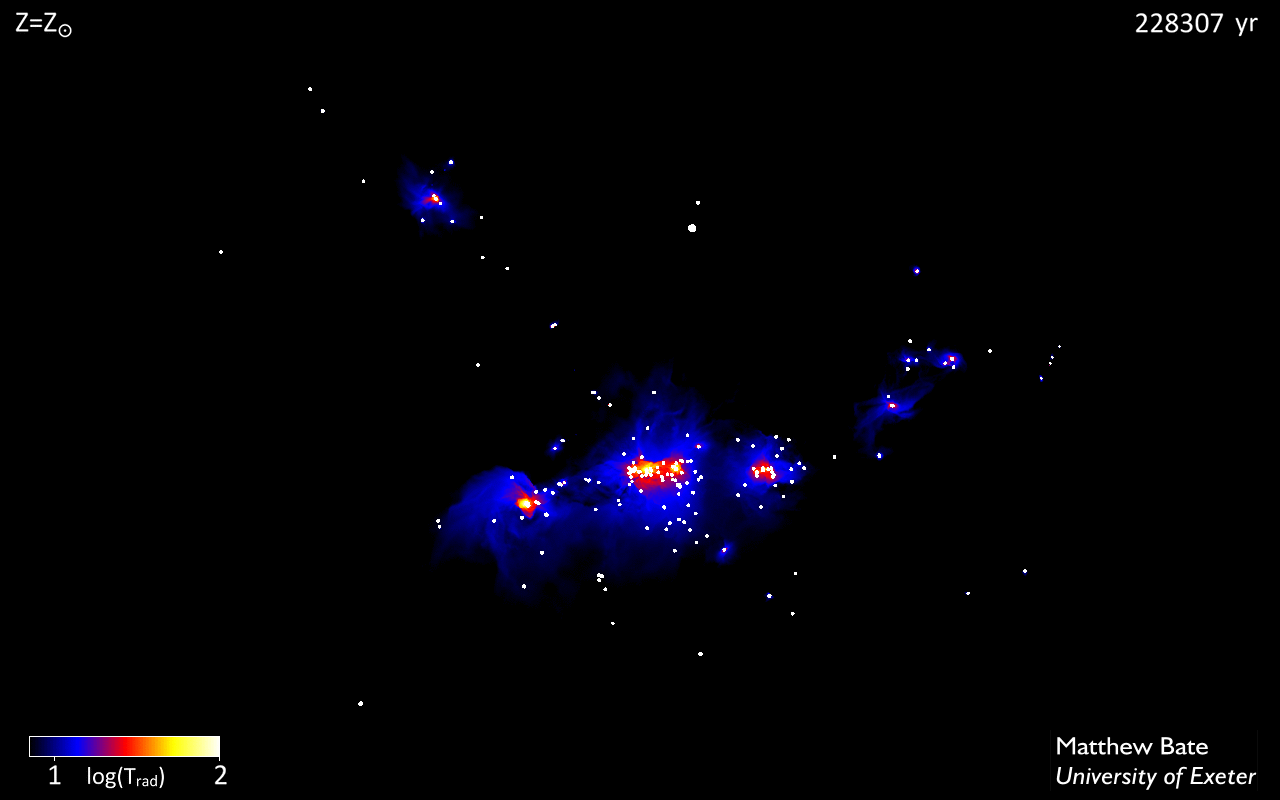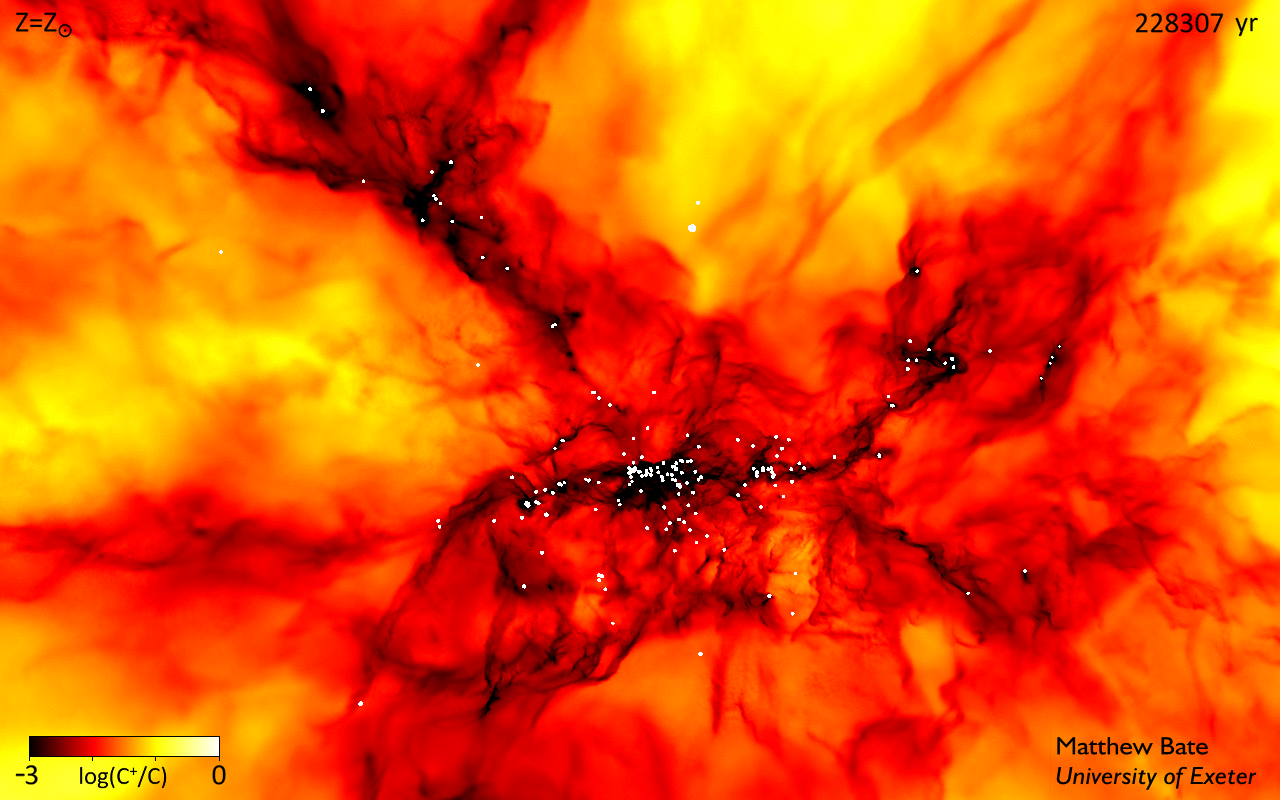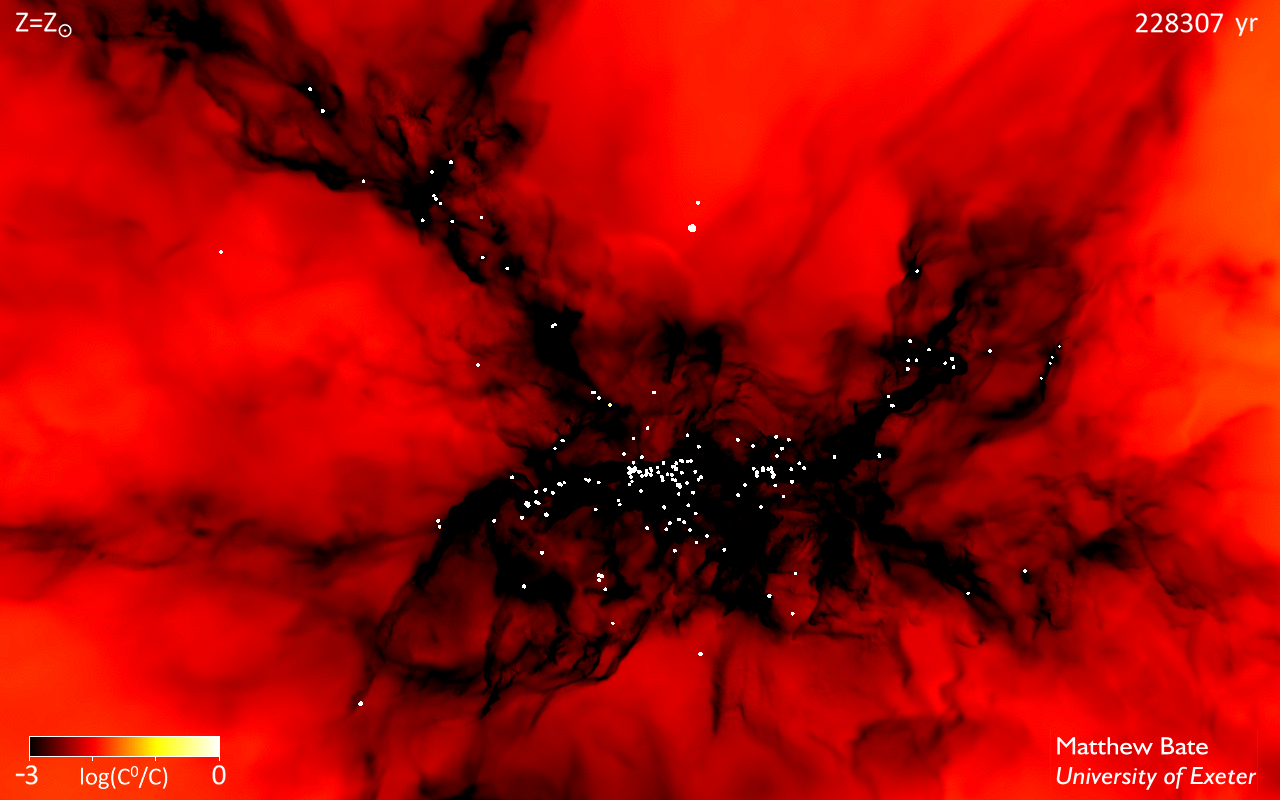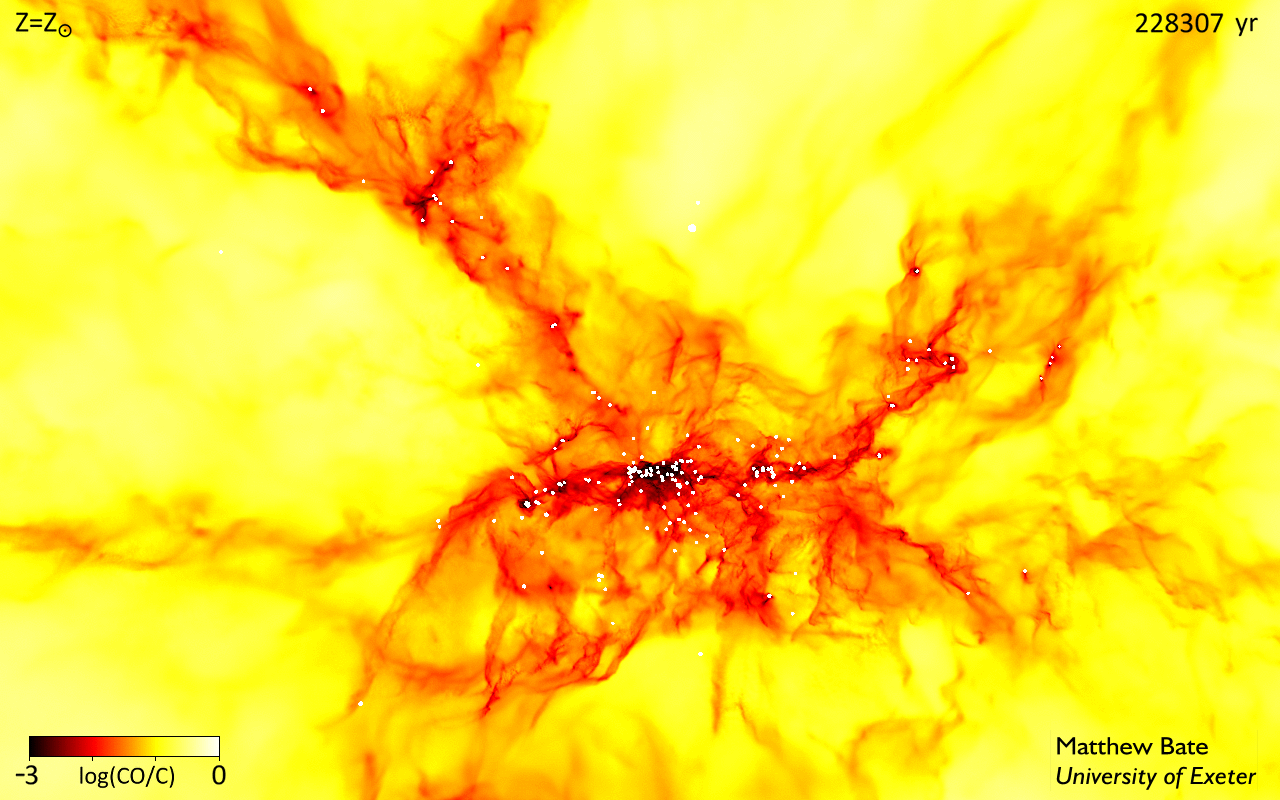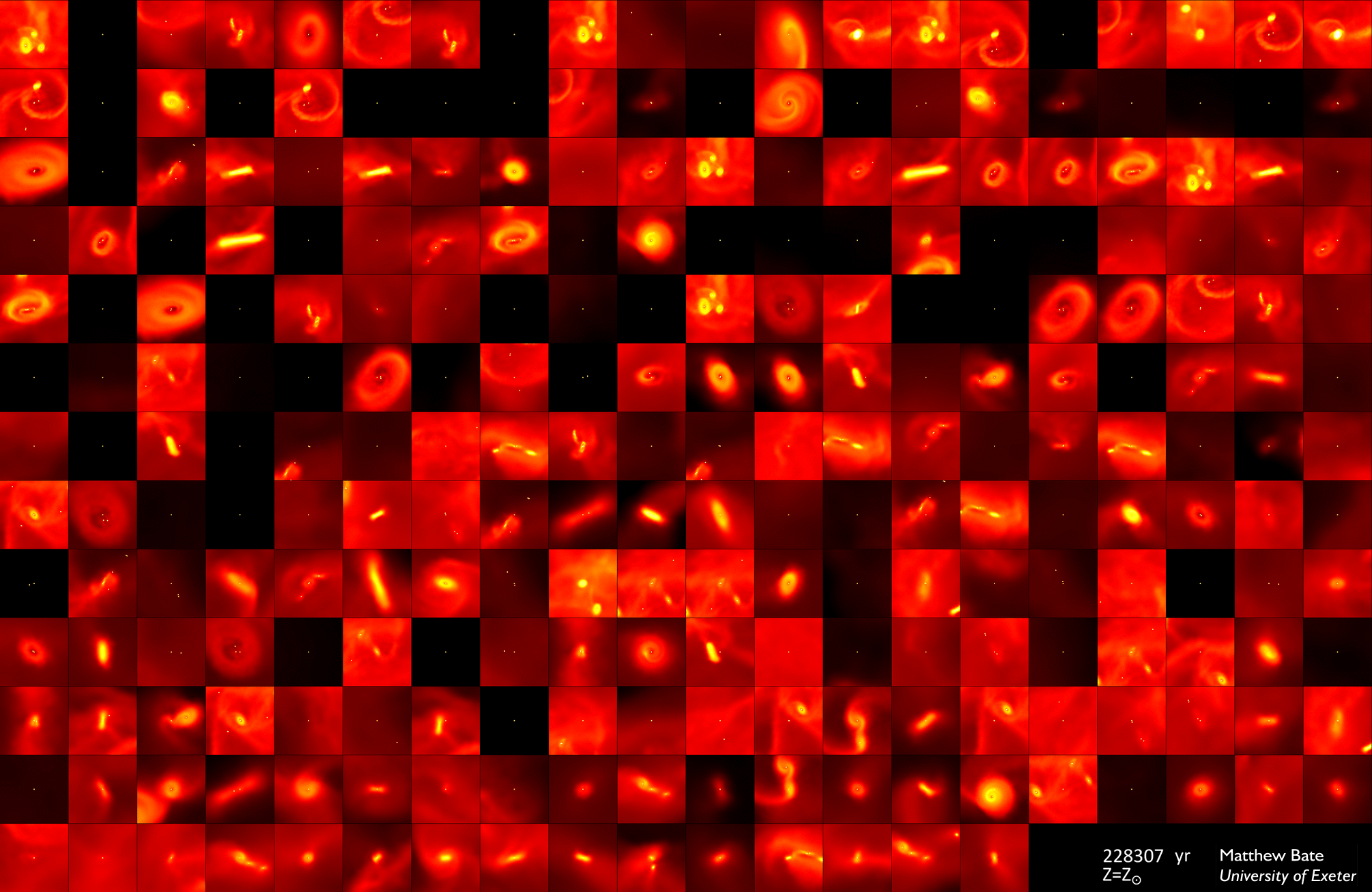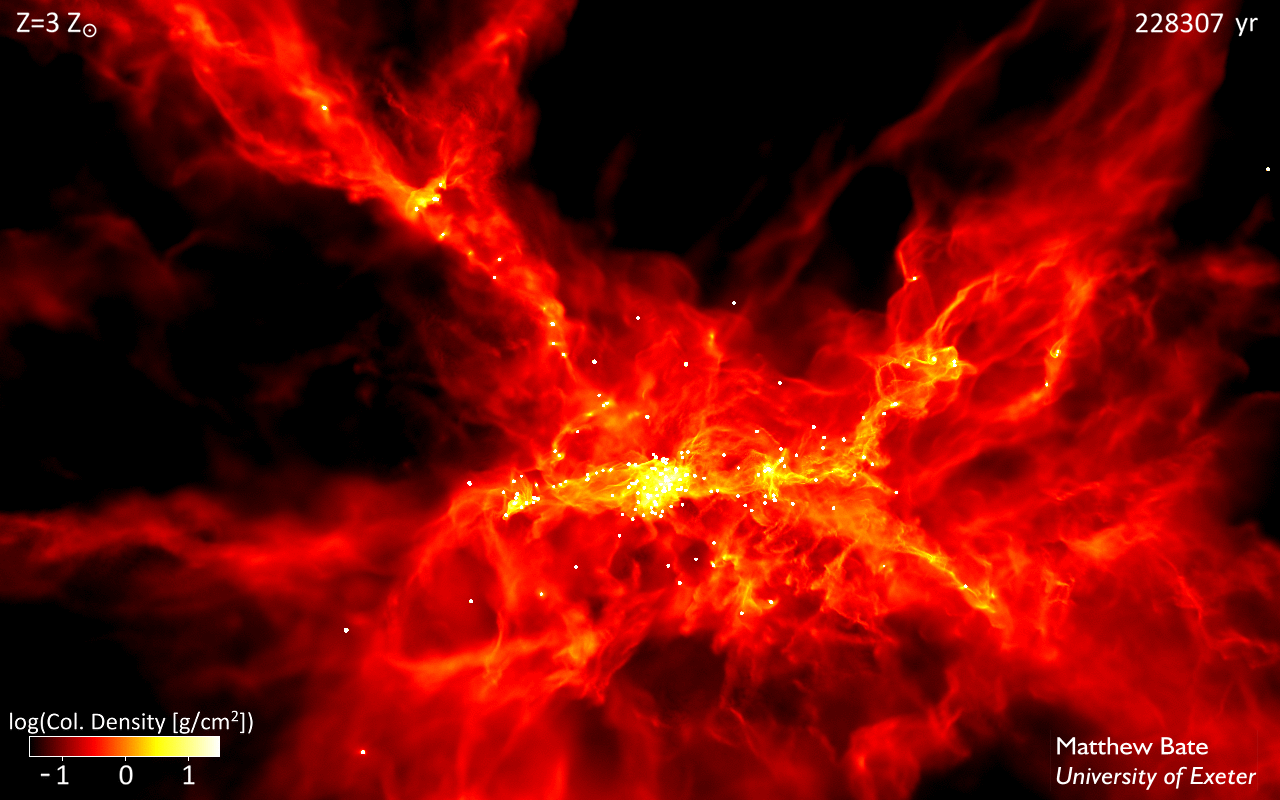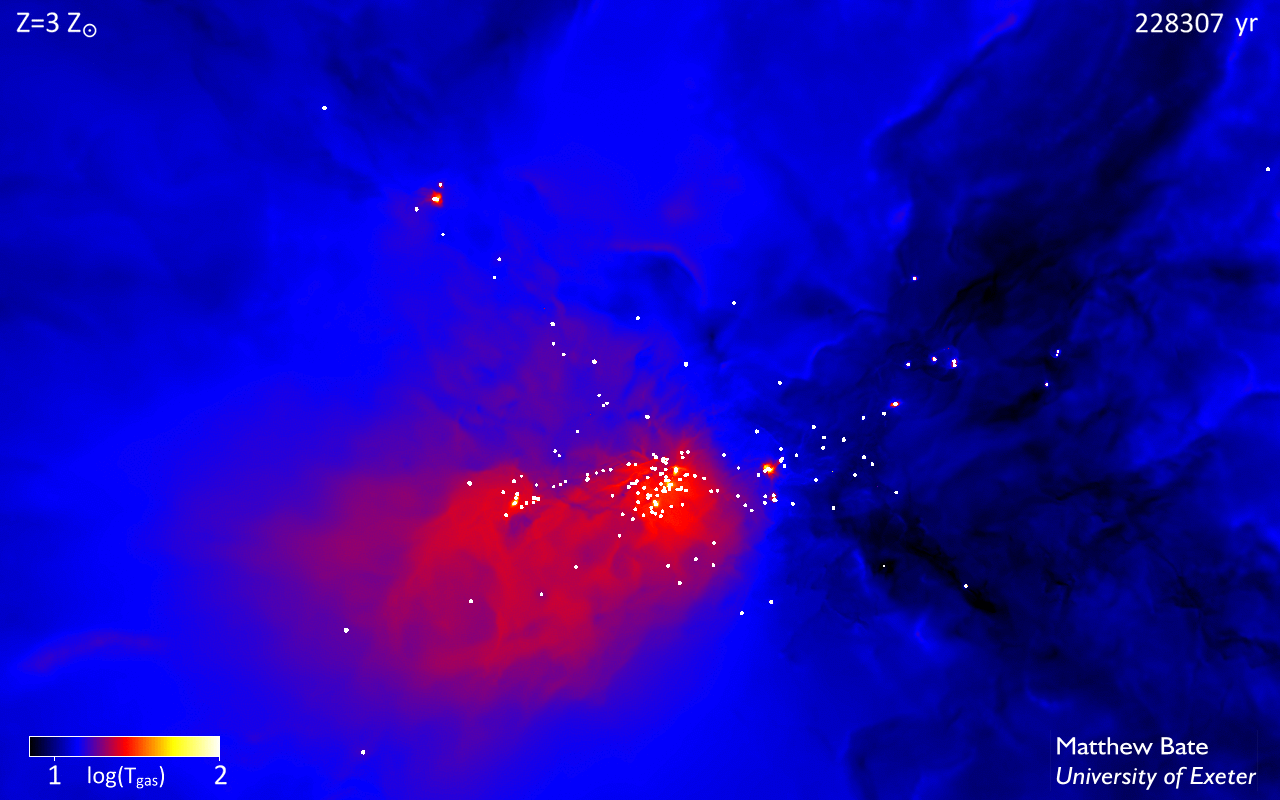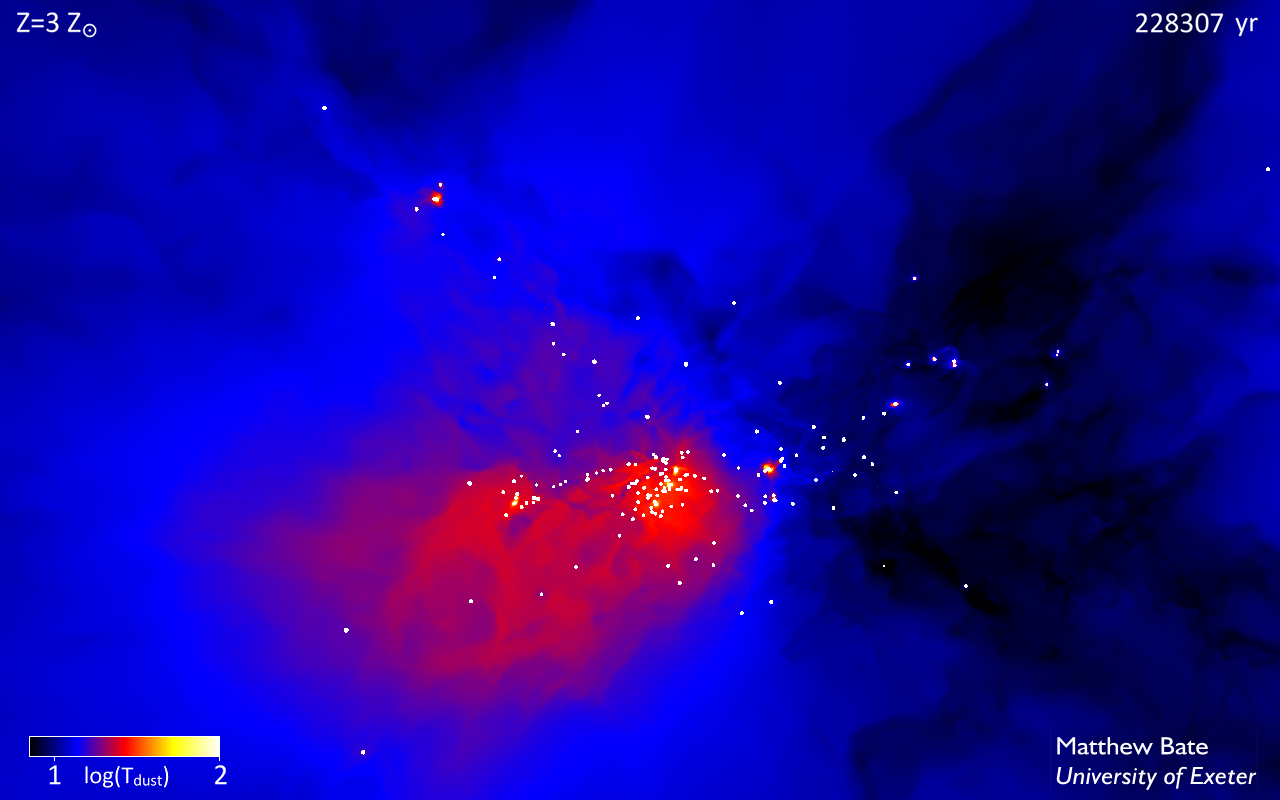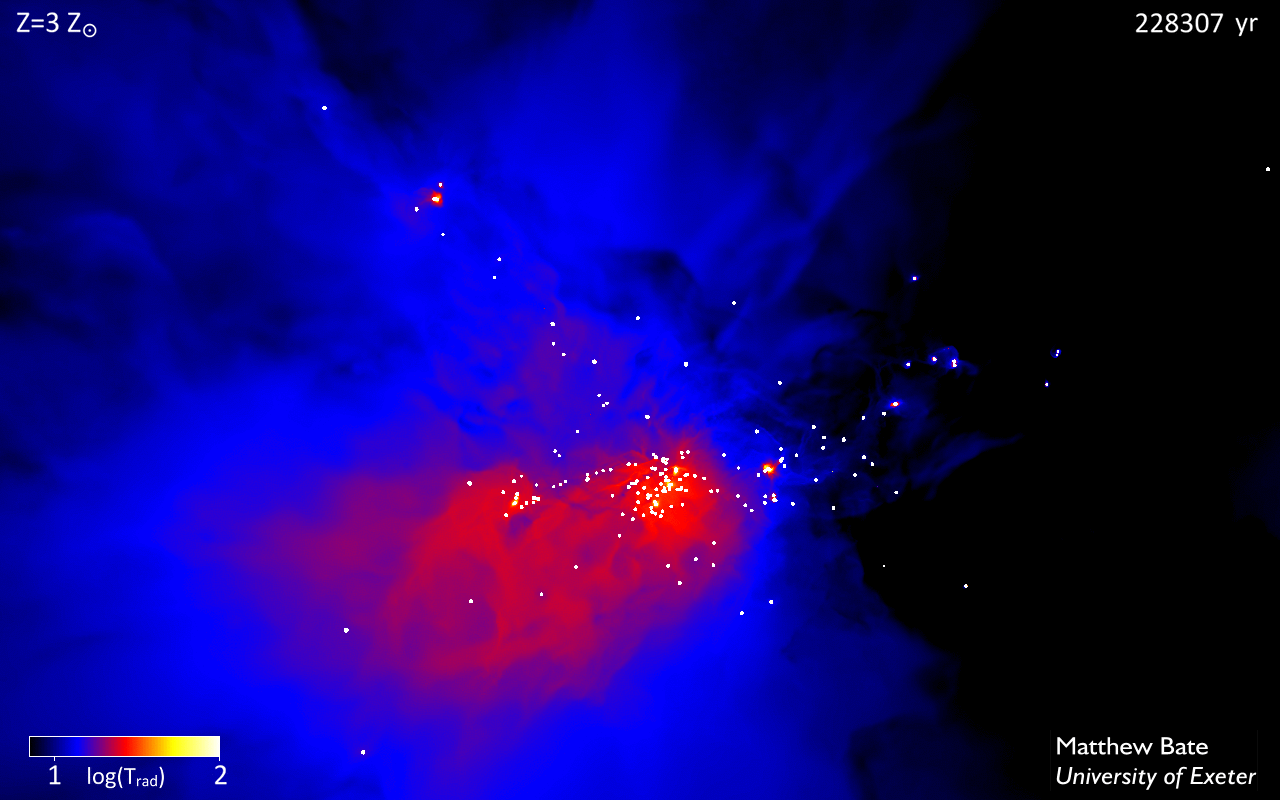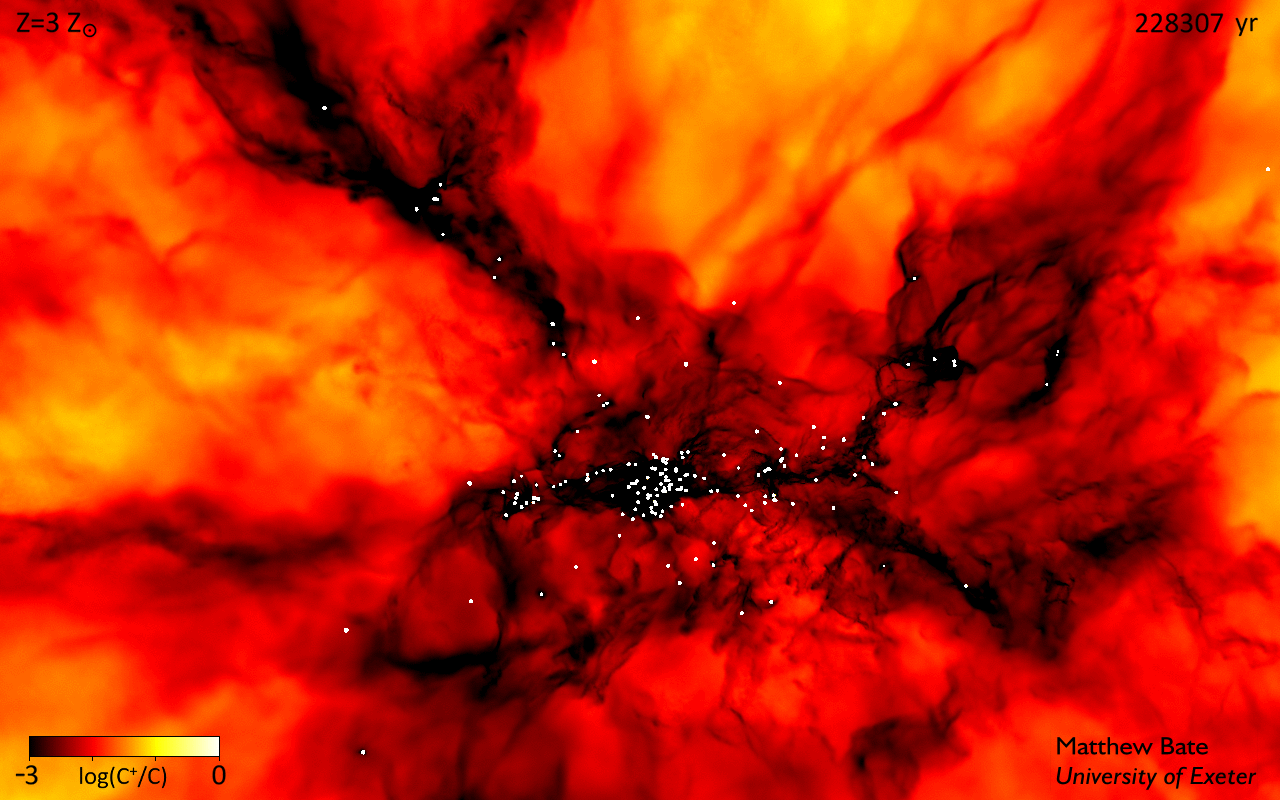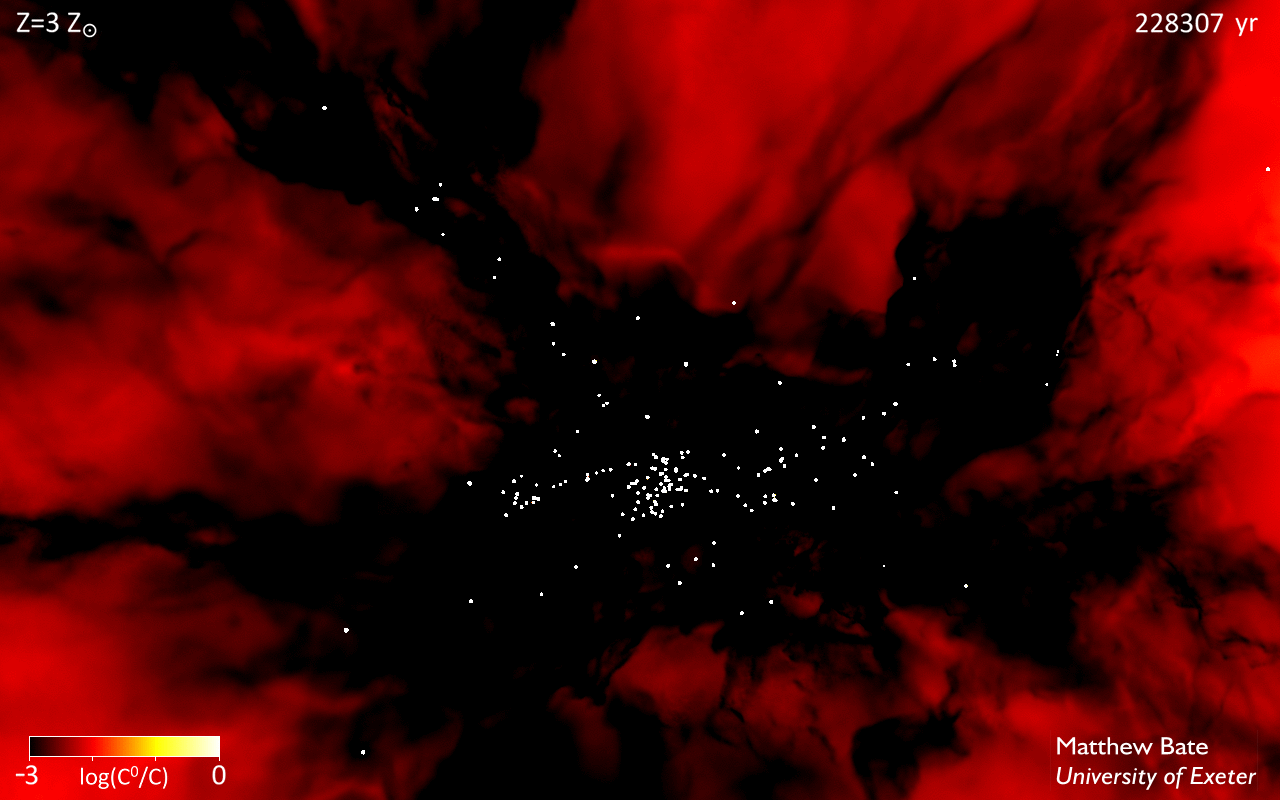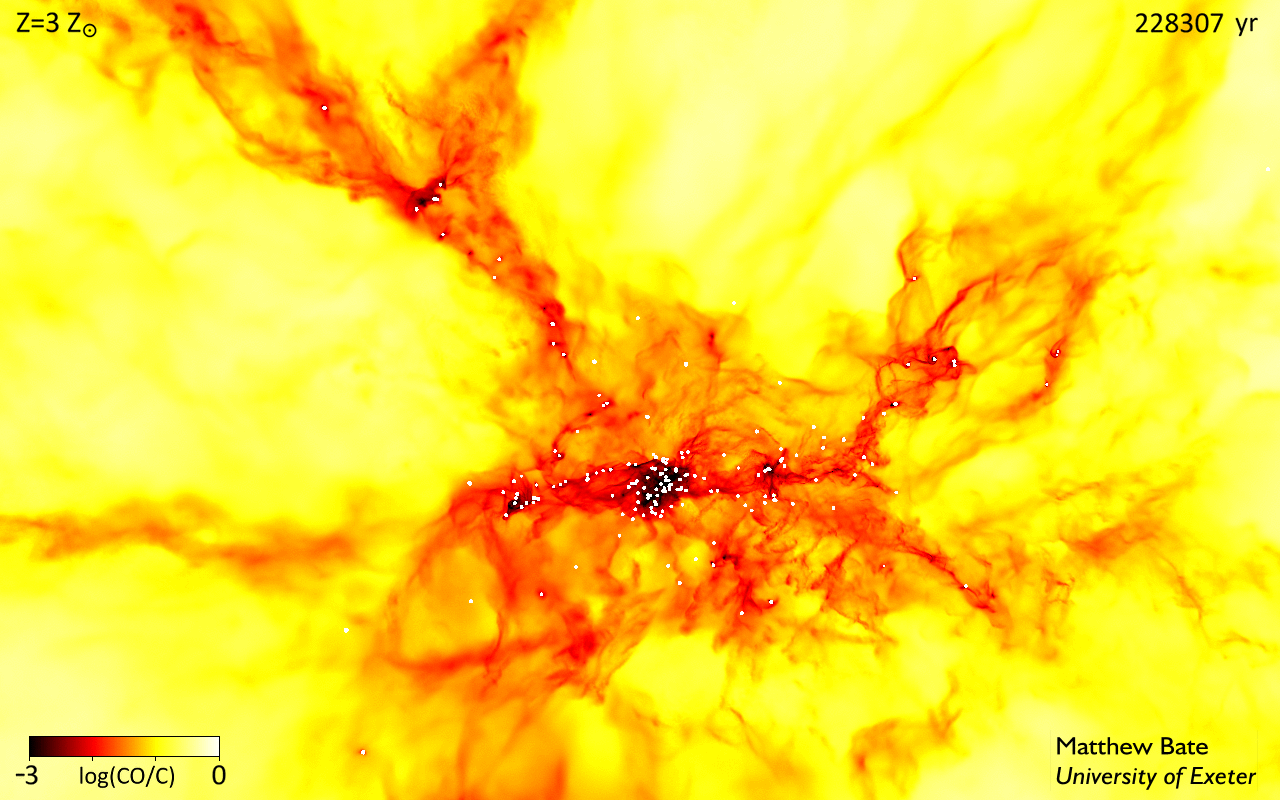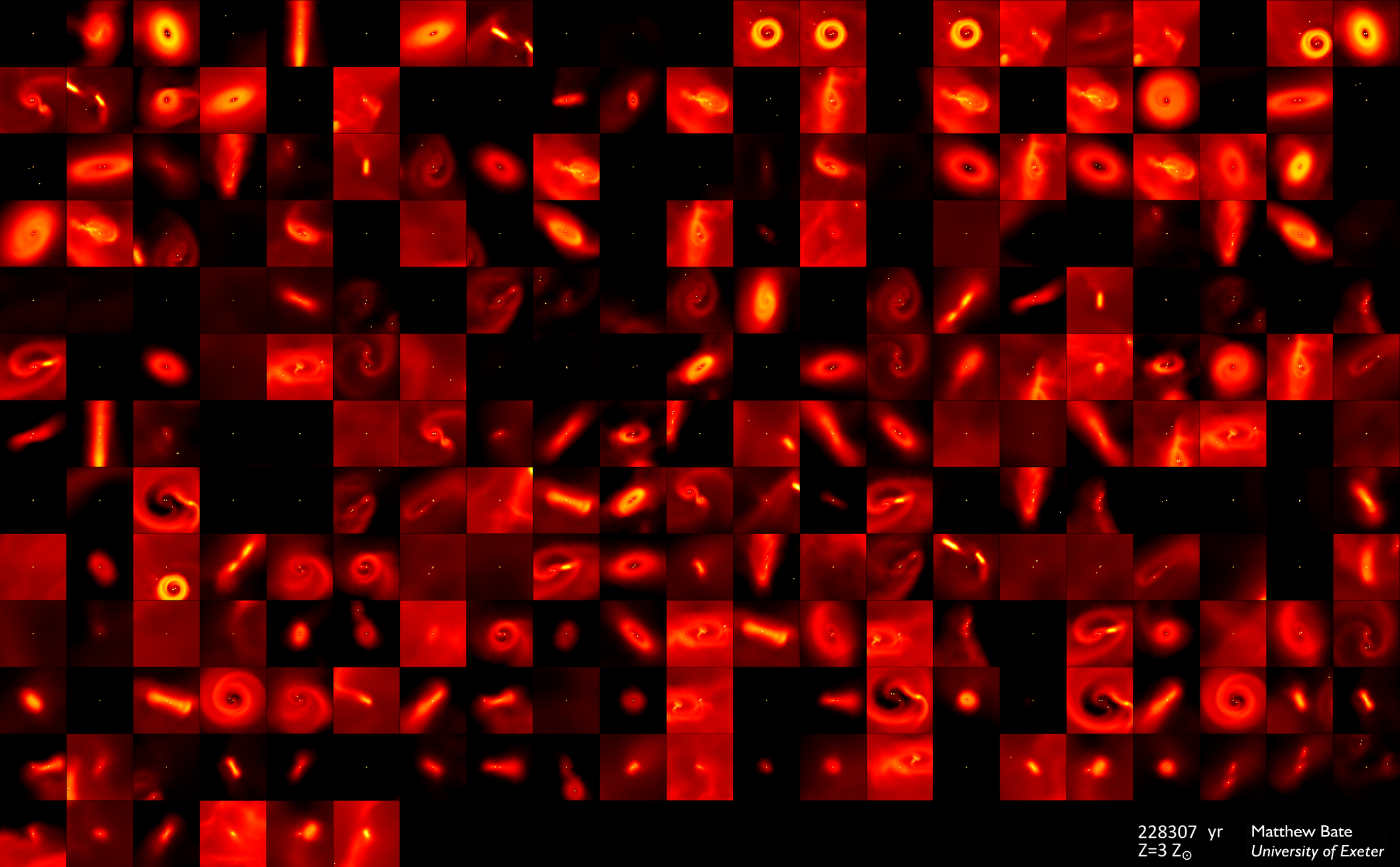The Statistical Properties of Stars and Their Dependence on MetallicityMatthew R. Bate We report the statistical properties of stars and brown dwarfs obtained from four radiation hydrodynamical simulations of star cluster formation, the metallicities of which span a range from 1/100 to 3 times the solar value. Unlike previous similar investigations of the effects of metallicity on stellar properties, these new calculations treat dust and gas temperatures separately and include a thermochemical model of the diffuse interstellar medium. The more advanced treatment of the interstellar medium gives rise to very different gas and dust temperature distributions in the four calculations, with lower metallicities generally resulting in higher temperatures and a delay in the onset of star formation. Despite this, once star formation begins, all four calculations produce stars at similar rates and many of the statistical properties of their stellar populations are difficult to distinguish from each other and from those of observed stellar systems. We do find, however, that the greater cooling rates at high gas densities due to the lower opacities at low metallicities increase the fragmentation on small spatial scales (disc, filament, and core fragmentation). This produces an anti-correlation between the close binary fraction of low-mass stars and metallicity similar to that which is observed, and an increase in the fraction of protostellar mergers at low metallicities. There are also indications that at lower metallicity close binaries may have lower mass ratios and the abundance of brown dwarfs to stars may increase slightly. However, these latter two effects are quite weak and need to be confirmed with larger samples. Refereed Scientific Papers
"The statistical properties of stars and their dependence on metallicity" AnimationsSimulation & visualisation by Matthew Bate.
For each of the four calculations, there are 8 movies. On large scales, few differences are apparent in the column density animations (the structure is smoother in clouds with lower metallicity due to the generally warmer gas), but the temperature movies differ substantially from one another. Click on the images to view the animations (in Quicktime format).
Copyright: The material on this page is the property of Matthew Bate. Movies and images are released under a Creative Commons Attribution-Noncommercial-Share Alike 3.0 License. Technical DetailsThe calculations model the collapse and fragmentation of 500 solar mass molecular clouds that are 0.8 pc in diameter (approximately 2.6 light-years). The free-fall time of the cloud is 190,000 years and the simulations cover 228,307 years. Four calculations were performed which were identical to each other except for their metallicity. The metallicities used were 1/100, 1/10, 1, and 3 times solar metallicity. The calculations employ dust and gas opacities appropriate for their metallicity. They also model gas and dust temperatures separately. A thermochemical model is used that combines radiative transfer with a model for the diffuse interstellar medium (Bate & Keto 2015). The thermochemical model includes heating due to the interstellar radiation field, cosmic rays, and molecular hydrogen formation. It includes cooling due to molecular and atomic line emission, and recombination lines. Collisional thermal coupling between the gas and the dust is also included. The calculations also include a simple chemical model that keeps track of the forms of hydrogen (atomic or molecular) and carbon (carbon monoxide (CO), neutral atomic carbon (CI), and ionised carbon (CII)). The clouds are given an initial supersonic `turbulent' velocity field in the same manner as Ostriker, Stone & Gammie (2001). We generate a divergence-free random Gaussian velocity field with a power spectrum P(k) \propto k-4, where k is the wave-number. In three-dimensions, this results in a velocity dispersion that varies with distance, lambda, as sigma(lambda) \propto lambda1/2 in agreement with the observed Larson scaling relations for molecular clouds (Larson 1981). This power spectrum is slighly steeper than the Kolmogorov spectrum, P(k)\propto k11/3. Rather, it matches the amplitude scaling of Burgers supersonic turbulence associated with an ensemble of shocks (but differs from Burgers turbulence in that the initial phases are uncorrelated). The calculations were performed using a parallel three-dimensional smoothed particle hydrodynamics (SPH) code, sphNG, with 35 million particles on the Complexity machine of STFC's DiRAC facility and the University of Exeter Supercomputer. The SPH code was parallelised using both MPI and OpenMP by M. Bate. The code uses sink particles (Bate, Bonnell & Price 1995) to model condensed objects (i.e. the stars and brown dwarfs). Sink particles are point masses that accrete bound gas that comes within a specified radius of them. This accretion radius is to set 0.5 AU. Binary systems are followed to separations as small as 0.03 AU - closer systems are assumed to merge. Copyright: Matthew Bate, University of Exeter.
|

